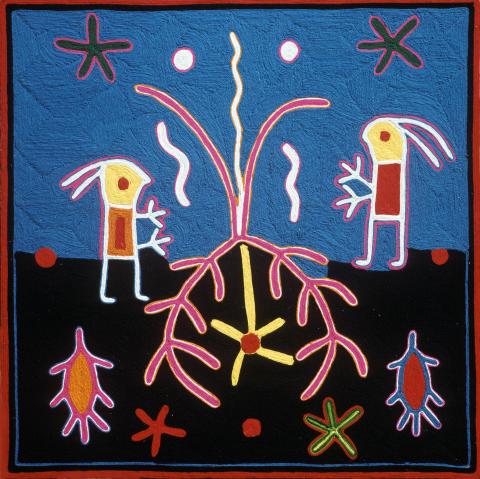A Mystical Communion with the Kieri
A man and his wife have undertaken a pilgrimage to a rocky mountain peak where the tree of wind, called kieri, lives.
The plant is depicted at center. Its roots spread out like claws on the barren black crag; they do not penetrate the earth.
After a long vigil and fast, the devout pilgrims see the flower of the tree bloom at mid-night. Under most circumstances its yellow pollen, called tükiyari, is toxic and disorienting, but it fills the cleansed pilgrims with wisdom and magical powers.
The gusty wind on the peak carries words from the tree to its devotees (white wavy lines).
They cast blood from sacrificed animals as offerings to the tree. They also offer two corn husks in prayer for a good crop. The white spots are food offerings of corn flour for the spirit of the tree. The flowers are used to sprinkle blood for the deified kieri.
Original yarn-painting by Guadalupe González Ríos (Ketsetemahé Teukarieya), 1973
Interpretation and translation by Juan Negrín based on a tape-recorded conversation with the artist.
© Juan Negrín 1973 - 2025. All rights reserved - Digital and Print
Guadalupe González Ríos (Ketsetemahé Teukarieya)






